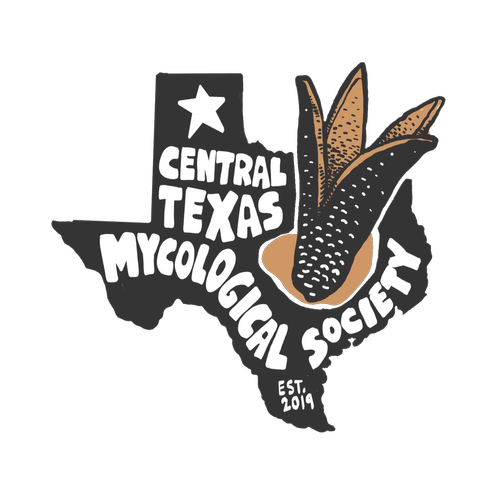




🍄⭐The November mushroom of the month is our official state mushroom, Chorioactis geaster, aka the Texas Star aka Devil’s cigar. This geographically rare mushroom will soon be blooming throughout central Texas.
🙌 to Heather Watson @miss.interpret.13 for naming that mushroom correctly and becoming the newest member of Central Texas Mycology!
You can also be a supporting member to stay dialed-in with events & discover next month’s mystery mushroom.
The Devil’s Cigar
In 2021, Texas became the third state to officially recognize a state mushroom. The honor was given to a little known mushroom that was found growing in central Texas by myco researchers in the 1990's who gave it the colloquial name “Devil’s Cigar” because of the unique way it spreads its spores. Chorioactis geaster, now known as the Texas Star, is a rare mushroom because it is found only in a few geologic regions. First collected in Austin in 1893, it was later found in Kyushu Japan in 1937, though it was not reported there again until 1973. In 2023 a myco researcher reported observations of it in Taiwan.
hissing science
When Chorioactis geaster emerges from the ground, it appears brown and elongated, resembling a cigar. Upon ripening, it splits open into a star shape, releasing spores in a smoky cloud accompanied by a hissing sound—a devilish display. This phenomenon is powered by “spore guns”: spores are lined up in liquid-filled tubes called asci, which stretch side by side within the star-like fruit body. As humidity shifts, pressure builds inside the asci until spores are forcefully ejected through the top opening in a single burst. In Texas, this remarkable transformation occurs in late fall to early winter, when cool, wet conditions are ideal for the Texas Star Mushroom’s unique show.
hunting the texas star
Texas star mushrooms are believed to be saprobic, deriving nutrients from decomposing organic matter. In Texas, fruit bodies are found growing singly or in groups from roots, stumps, and dead roots of cedar elm trees (Ulmus crassifolia). In Japan, the usual host is dead oak trees. Fruit bodies can be clustered together close to the base of the stump, or from the roots away from the stump; In Texas, fruit bodies usually appear between October and April, as this period is associated with somewhat cooler weather, and the temperature and moisture conditions during this time seem to be more favorable for growth.

